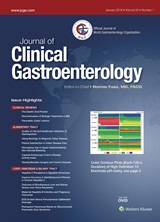
“Δ9-THC suppresses cisplatin-induced vomiting through activation of cannabinoid CB1 receptors.
Cisplatin-evoked emesis is predominantly due to release of serotonin and substance P (SP) in the gut and the brainstem which subsequently stimulate their corresponding 5-HT3-and neurokinin NK1-receptors to induce vomiting. Δ9-THC can inhibit vomiting caused either by the serotonin precursor 5-HTP, or the 5-HT3 receptor selective agonist, 2-methyserotonin.
In the current study, we explored whether Δ9-THC and related CB1/CB2 receptor agonists (WIN55,212-2 and CP55,940) inhibit vomiting evoked by SP (50 mg/kg, i.p.) or the NK1 receptor selective agonist GR73632 (5 mg/kg, i.p.). Behavioral methods were employed to determine the antiemetic efficacy of cannabinoids in least shrews.
Our results showed that administration of varying doses of Δ9-THC (i.p. or s.c.), WIN55,212-2 (i.p.), or CP55,940 (i.p.) caused significant suppression of SP-evoked vomiting in a dose-dependent manner. When tested against GR73632, Δ9-THC also dose-dependently reduced the evoked emesis.
The antiemetic effect of Δ9-THC against SP-induced vomiting was prevented by low non-emetic doses of the CB1 receptor inverse-agonist/antagonist SR141716A (<10 mg/kg). We also found that the NK1 receptor antagonist netupitant can significantly suppress vomiting caused by a large emetic dose of SR141716A (20 mg/kg).
In sum, Δ9-THC and related cannabinoids suppress vomiting evoked by the nonselective (SP) and selective (GR73632) neurokinin NK1 receptor agonists via stimulation of cannabinoid CB1 receptors.”
https://www.ncbi.nlm.nih.gov/pubmed/31738934
https://www.sciencedirect.com/science/article/pii/S0014299919307587?via%3Dihub





 “There is an increased interest in the use of cannabinoids in the treatment of symptoms in cancer and palliative care patients. Their multimodal action, in spite of limited efficacy, may make them an attractive alternative, particularly in patients with multiple concomitant symptoms of mild and moderate intensity. There is evidence to indicate
“There is an increased interest in the use of cannabinoids in the treatment of symptoms in cancer and palliative care patients. Their multimodal action, in spite of limited efficacy, may make them an attractive alternative, particularly in patients with multiple concomitant symptoms of mild and moderate intensity. There is evidence to indicate  “Complementary therapies for inflammatory bowel disease (IBD) have earned growing interest from patients and investigators alike, with a dynamic landscape of research in this area. In this article, we review results of the most recent studies evaluating the role of cannabis and turmeric for the treatment of IBD and other intestinal illnesses.
“Complementary therapies for inflammatory bowel disease (IBD) have earned growing interest from patients and investigators alike, with a dynamic landscape of research in this area. In this article, we review results of the most recent studies evaluating the role of cannabis and turmeric for the treatment of IBD and other intestinal illnesses.

